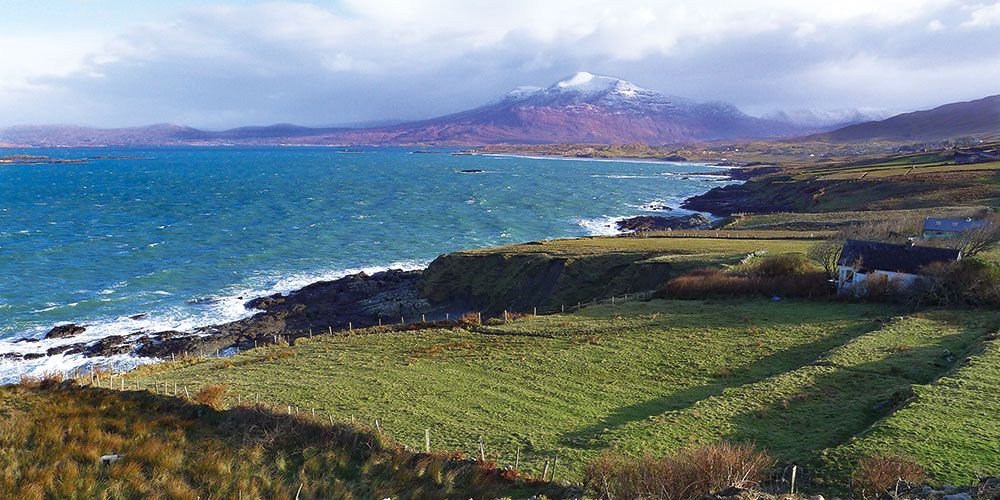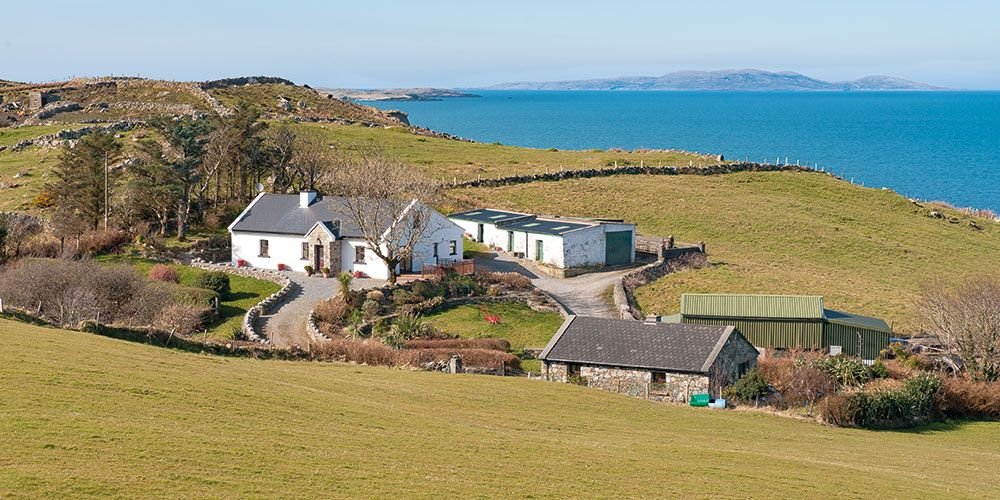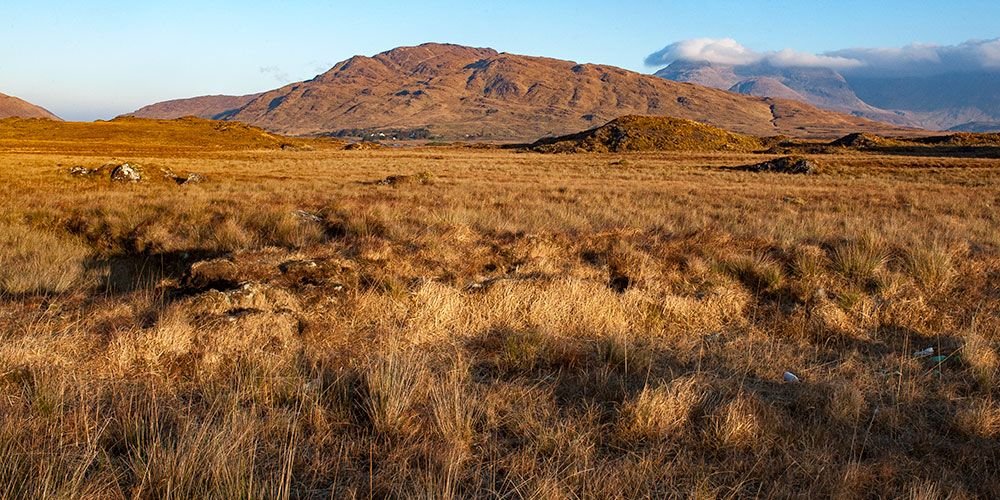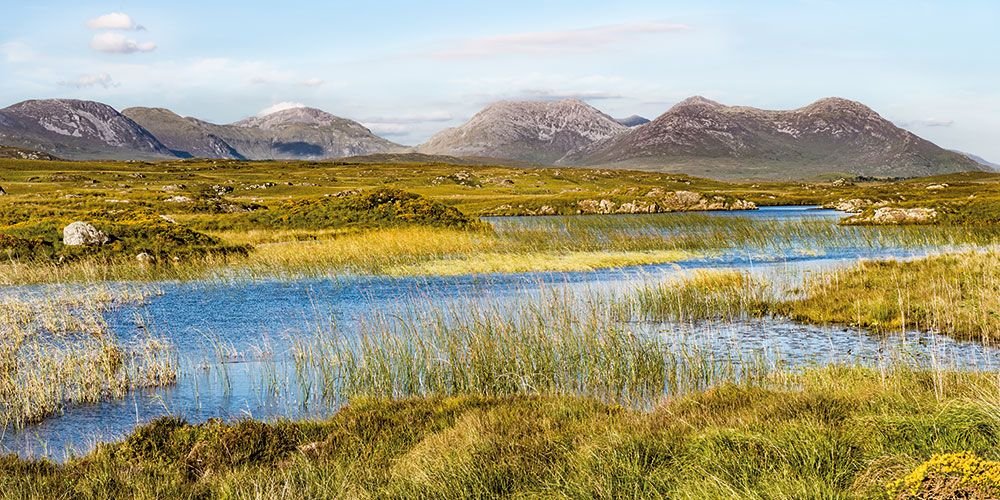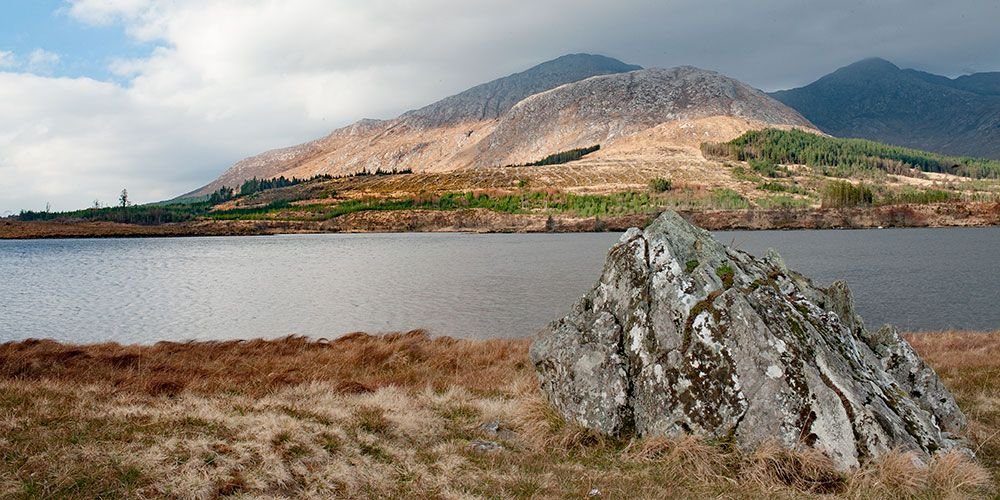Contrary to what is often wrongly thought, Connemara is not a county, but a geographical area in the west of Ireland (more precisely, in the County Galway); its extension roughly goes from Lough Corrib to the shores of the ocean. It is traditionally divided into North and South Connemara, the bounda...
Although a large statue located in Recess depicts Connemara as a thoughtful bearded giant, in my opinion, it resembles more a wild horse, a beautiful and indomitable thoroughbred, changeable in its moods and its state of mind. The reason lies in the extreme variability of the landscape, the sky, and...
Connemara covers an area of 192,144 hectares of land and the population, essentially a rural community, is equal to 30,000 people, with a density of one inhabitant per 6.5 hectares (Scannell 1984). The Atlantic climate causes a high level of rainfall, with peaks of 2500 mm per year in the mountainou...
Climbing the mountains of Connemara can be considered as an easy task by mountaineers accustomed to more challenging peaks: being ancient geological formations of quartzite, the average height of these peaks is about 700-800 meters, with the only exception of Mount Gable (1370 mt.), which separate...
The link between Connemara and water is very deep: the whole region is crossed by more or less consistent little rivers, whose waters have generally the colour of turf (and they also taste the same... just give 'em a try!). As for the lakes, the area is dotted and lined with mirrors of different siz...
Wildlife Nature is all around you in the Connemara: easily accessible mountain trails, long beaches to stroll along, lake shores on which to linger, watching the solemn and regal movements of the swans, brown bogs made multi-coloured by the blossoming of flowers with incredible colours ....
Pleas...

